Class 7 Maths Chapter 15 Visualising Solid Shapes NCERT Solutions
- Class 7 Maths Visualising Solid Shapes Exercise 15.1
- Class 7 Maths Visualising Solid Shapes Exercise 15.2
- Class 7 Maths Visualising Solid Shapes Exercise 15.3
- Class 7 Maths Visualising Solid Shapes Exercise 15.4
NCERT Solutions for Class 7 Maths Chapter 15 Visualising Solid Shapes Exercise 15.1
Ex 15.1 Class 7 Maths Question 1.
Identify the nets which can be used to make cubes (Cut out copies of the nets and try it):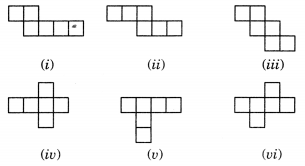
Solution:
Fig. (ii), (iii), (iv) and (vi) can be used to make cubes.
Ex 15.1 Class 7 Maths Question 2.
Dice are cubes with dots on each face. Opposite faces of a die always have a total of seven dots on them.
Here are two nets to make dice (cubes); the number inserted in each square indicate the number of dots in that box.
Insert suitable number in the blanks, remembering that the number on the opposite faces should total to 7.
Solution:

Ex 15.1 Class 7 Maths Question 3.
Can this be a net for a die? Explain your answer.
Solution:
If one pair of opposite faces will have 1 and 4 on them, then their total does not come 7.
If we take 3 and 6 on the opposite faces of the die, then the total does not come 7.
Hence, this cannot be for a die.
Ex 15.1 Class 7 Maths Question 4.
Here is an incomplete net for making a cube. Complete it in atleast two different ways. Remember that a cube has six faces. How many are there in the net here? (Give two separate diagrams. If you like, you may use a squared sheet for easy manipulation).
Solution:
There are three faces in the given net.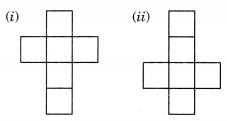
Ex 15.1 Class 7 Maths Question 5.
Match the nets with appropriate solids: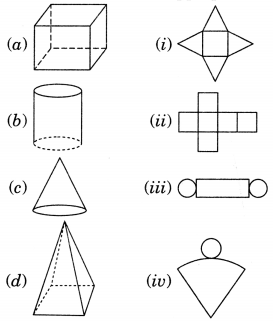
Solution:
(a) (ii)
(b) (iii)
(c) (iv)
(d) (i)
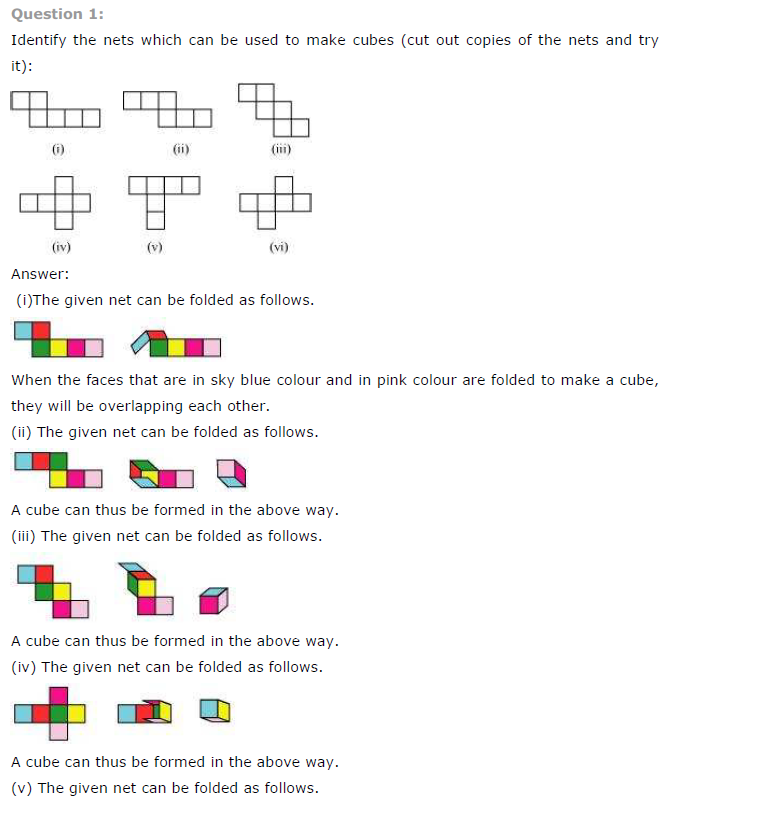
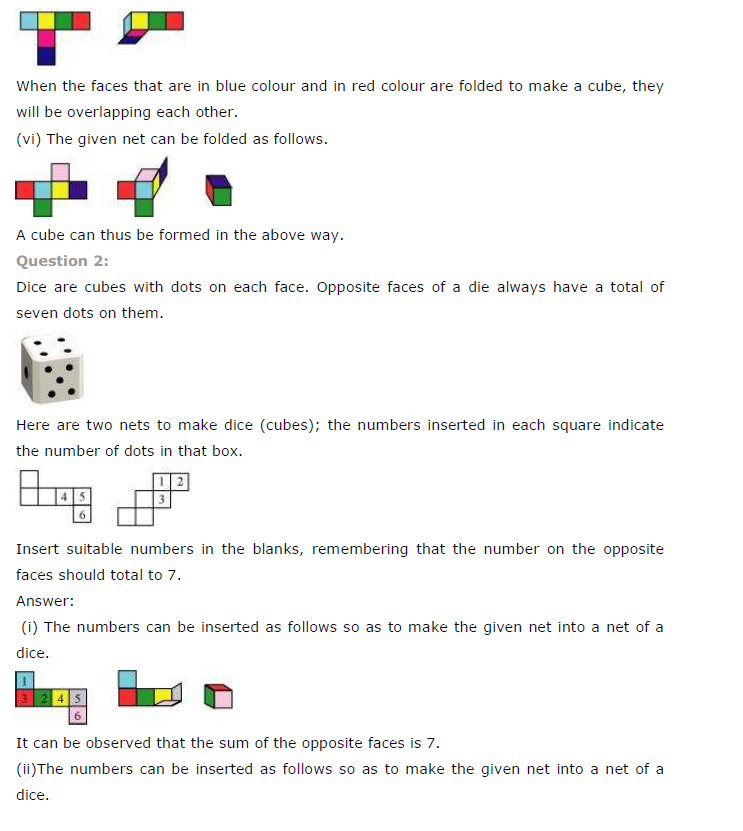
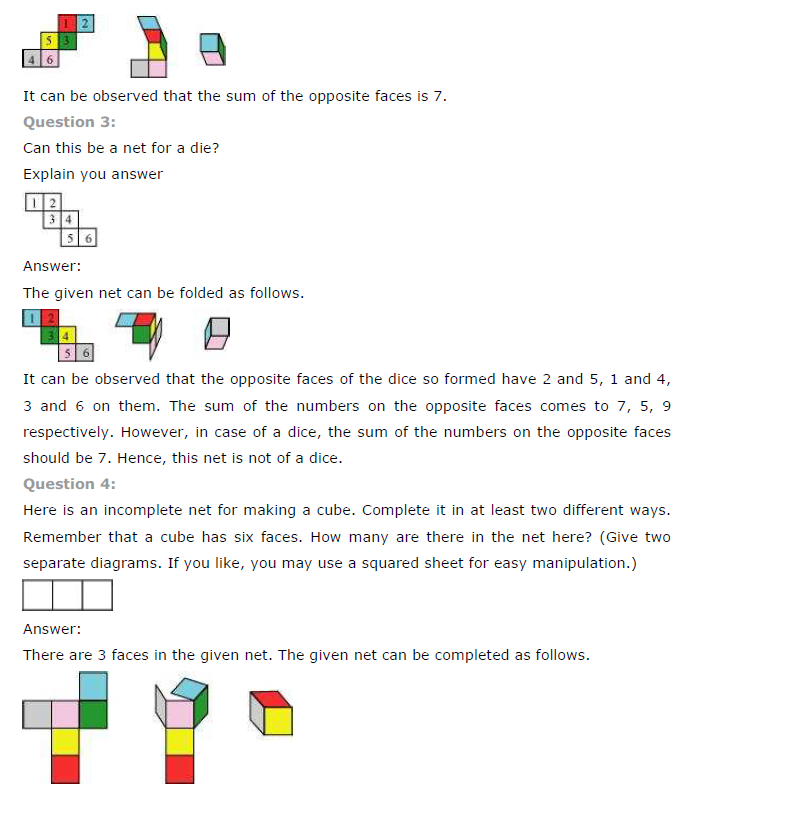
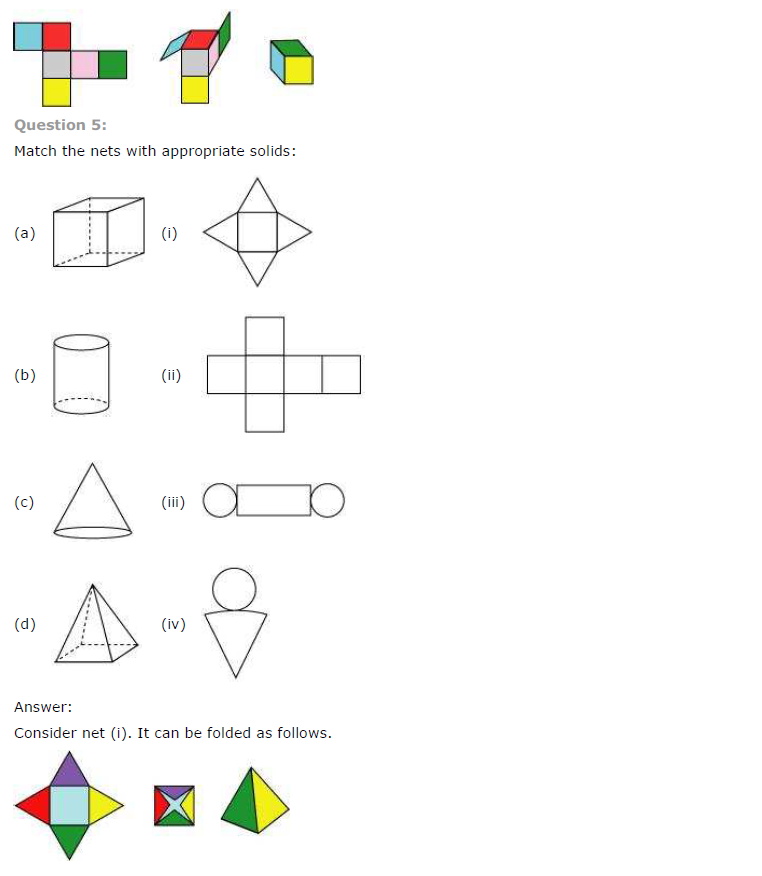
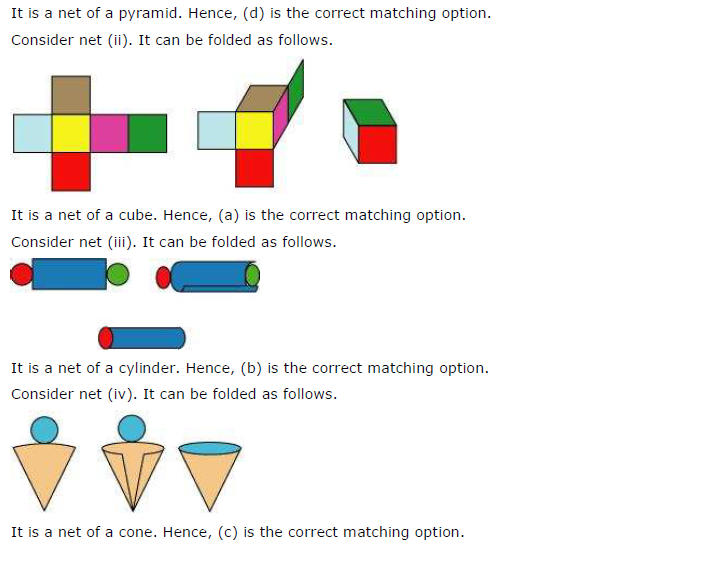
NCERT Solutions for Class 7 Maths Chapter 15 Visualising Solid Shapes Exercise 15.2
Ex 15.2 Class 7 Maths Question 1.
Use isometric dot paper and make an isometric sketch for each one of the given shapes: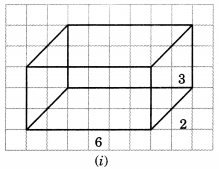
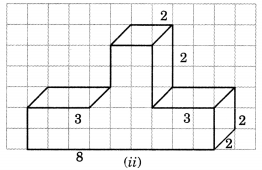
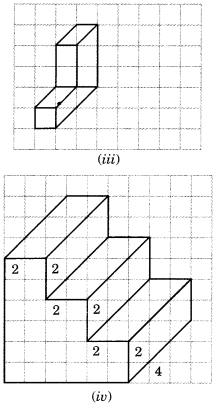
Solution: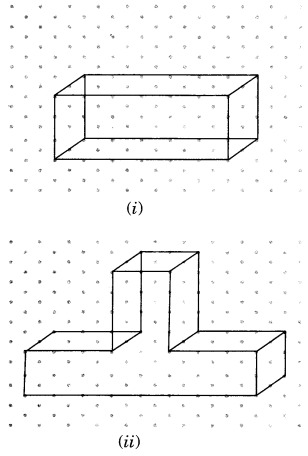
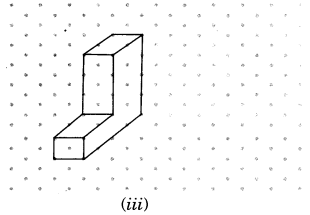
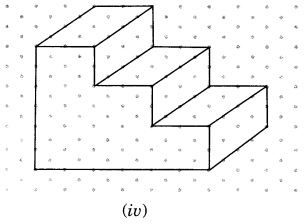
Ex 15.2 Class 7 Maths Question 2.
The dimensions of a cuboid are 5 cm, 3 cm and 2 cm. Draw three different isometric sketches of this cuboid.
Solution: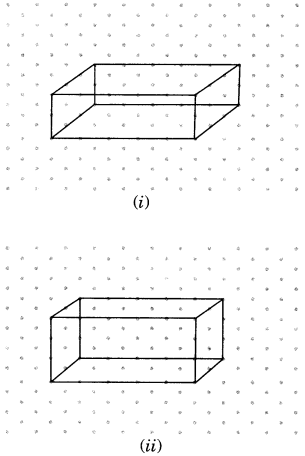
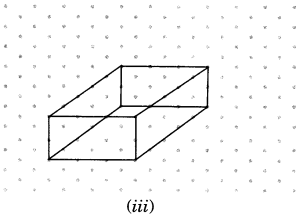
Ex 15.2 Class 7 Maths Question 3.
Three cubes with 2 cm edge are placed side by side to form a cuboid. Sketch an oblique or isometric sketch of this cuboid.
Solution:
In the given figure, we have an isometric sketch of a cuboid formed by placing three cubes each of 2 cm edge side by side.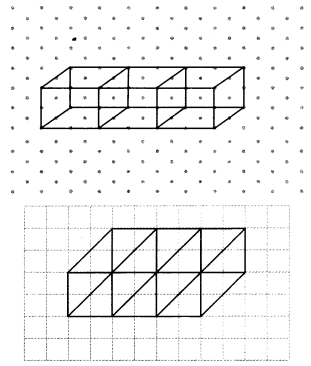
Ex 15.2 Class 7 Maths Question 4.
Make an oblique sketch for each one of the given isometric shapes: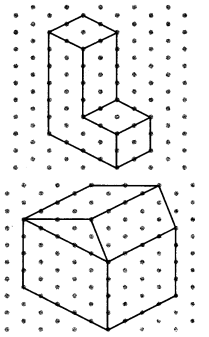
Solution: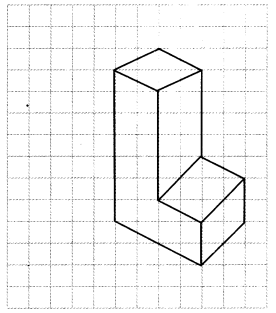
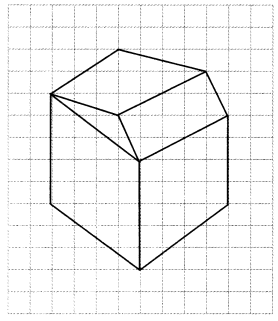
Ex 15.2 Class 7 Maths Question 5.
Give (i) an oblique sketch and (ii) an isometric sketch for each of the following:
(а) A cuboid of dimensions 5 cm, 3 cm and 2 cm. (Is your sketch unique?)
(b) A cube with an edge 4 cm long.
An isometric sheet is attached at the end of the book. You could try to make on it some cubes or cuboids of dimensions specified by your friend.
Solution: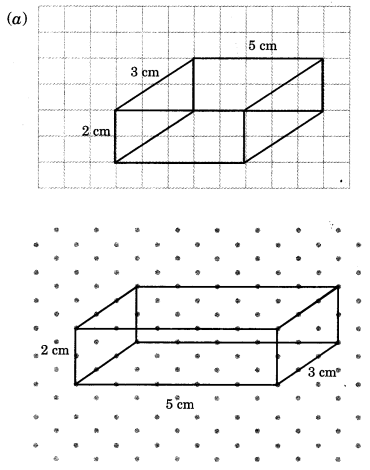
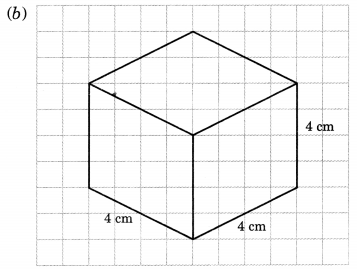
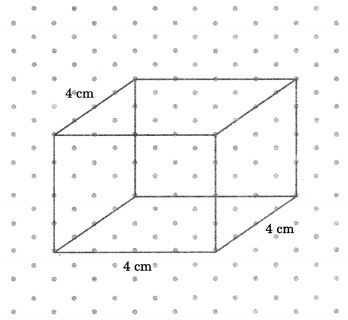
No, this sketch is not unique.
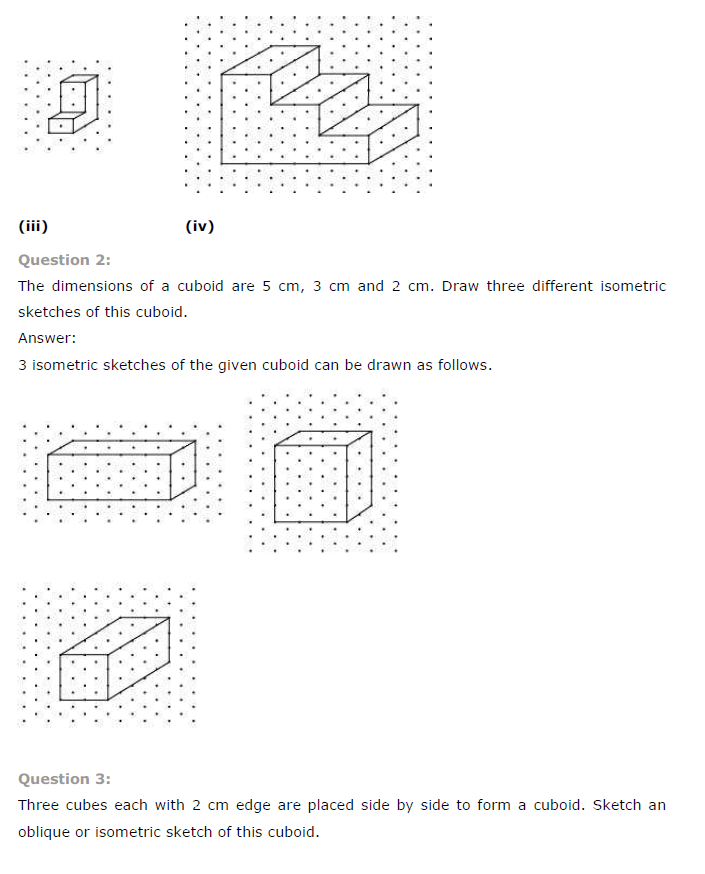
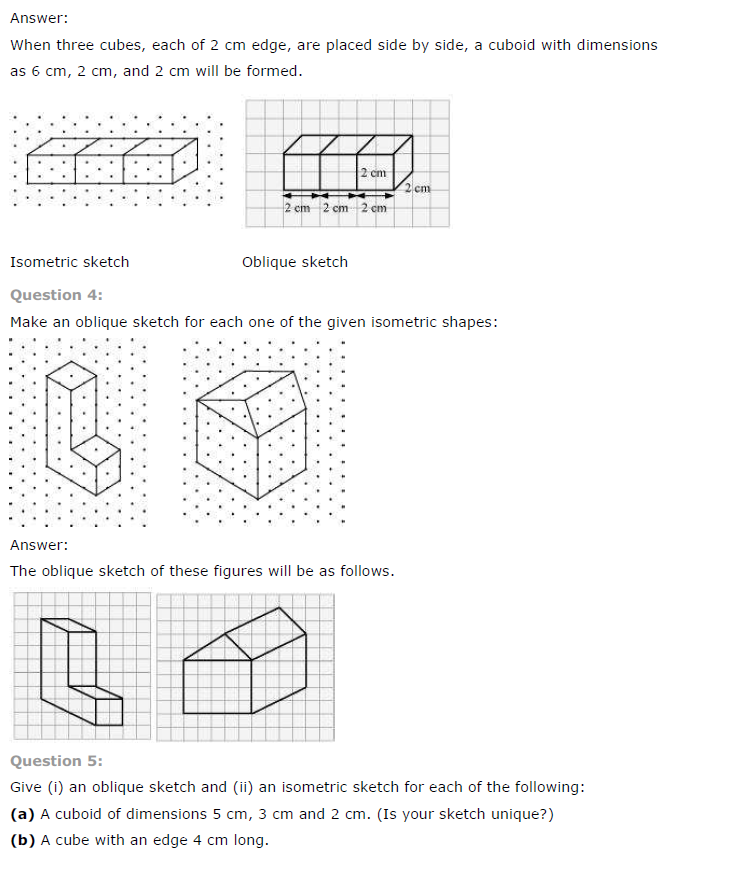
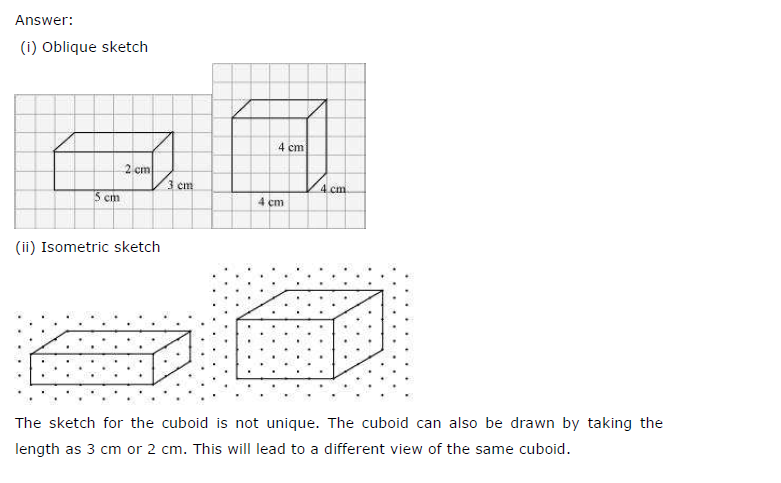
NCERT Solutions for Class 7 Maths Chapter 15 Visualising Solid Shapes Exercise 15.3
Ex 15.3 Class 7 Maths Question 1.
What cross-sections do you get when you give a
(i) vertical cut
(ii) horizontal cut to the following solids?
(a) A brick
(b) A round apple
(c) A die
(d) A circular pipe
(e) An ice cream cone.
Solution:
| Solids | Shape of cross-section of vertical cut | Shape of crosssection for horizontal cut |
| (a) A brick | Rectangle | Rectangle |
| (b) A round apple | Circle | Circle |
| (c) A die | Square | Square |
| (d) A circular pipe | Circle | Rectangle |
| (e) An ice cream apple | Triangle | Circle |
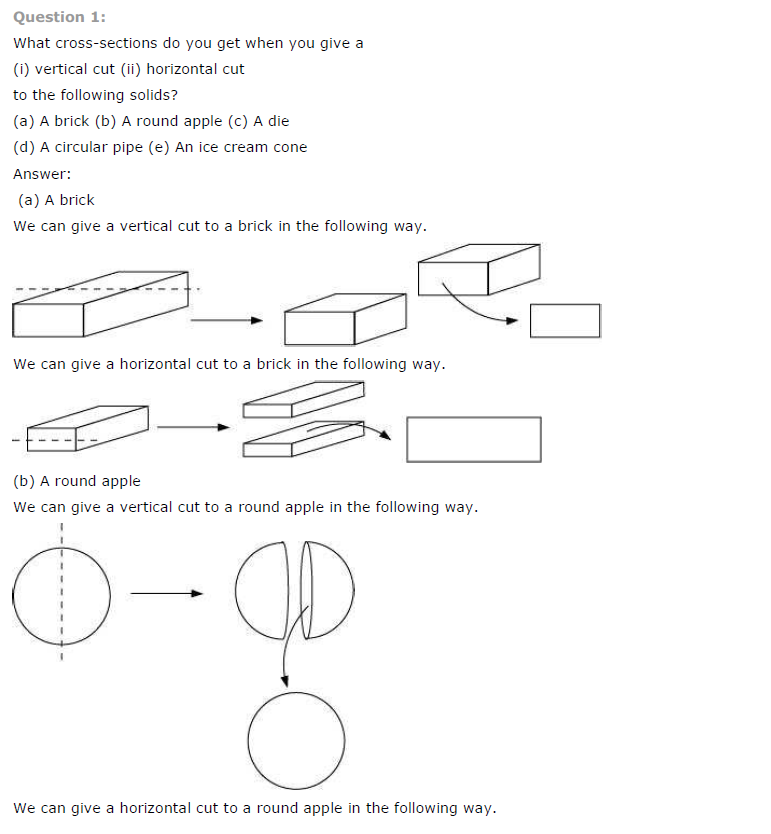
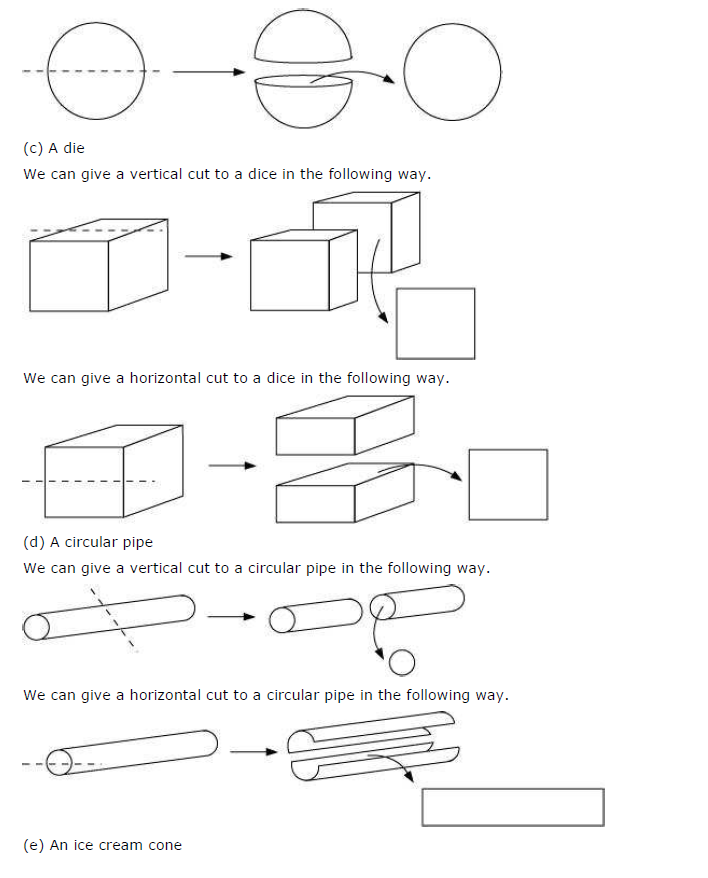
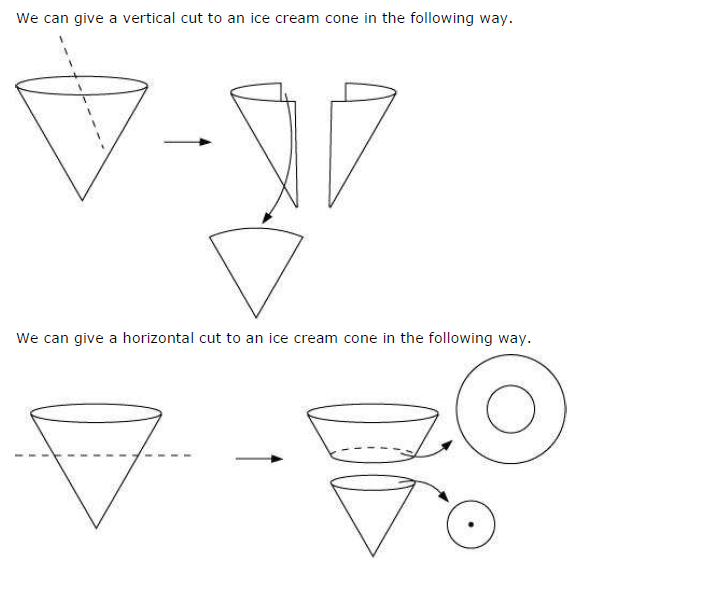
NCERT Solutions for Class 7 Maths Chapter 15 Visualising Solid Shapes Exercise 15.4
Ex 15.4 Class 7 Maths Question 1.
A bulb is kept burning just right above the following solids. Name the shape of the shadows obtained in each case. Attempt to give a rough sketch of the shadow. (You may try to experiment first and then answer these questions).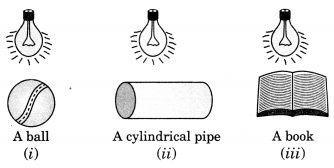
Solution:
When the light falls just above the solids.
(i) A ball; the shadow looks like a circle.
(ii) A cylindrical pipe; the shadow looks like nearly rectangular.
(iii) A book; the shadow looks like nearly rectangular.
Ex 15.4 Class 7 Maths Question 2.
Here are the shadows of some 3-D objects, when seen under the lamp of an overhead projector. Identify the solid(s) that match each shadow. (There may be multiple answers for these!)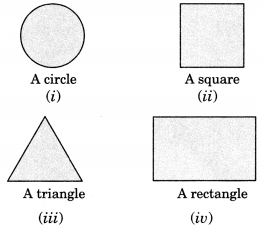
Solution:
(i) The given shadow corresponds to a sphere.
(ii) The given shadow corresponds to a cube.
(iii) The given shadow corresponds to a pyramid.
(iv) The given shadow corresponds to a cuboid or a cylinder.
Ex 15.4 Class 7 Maths Question 3.
Examine if the following are true statements:
(i) The cube can cast a shadow in the shape of a rectangle.
(ii) The cube can cast a shadow in the shape of a hexagon.
Solution:
(i) The given statement is true.
(ii) The given statement is false.
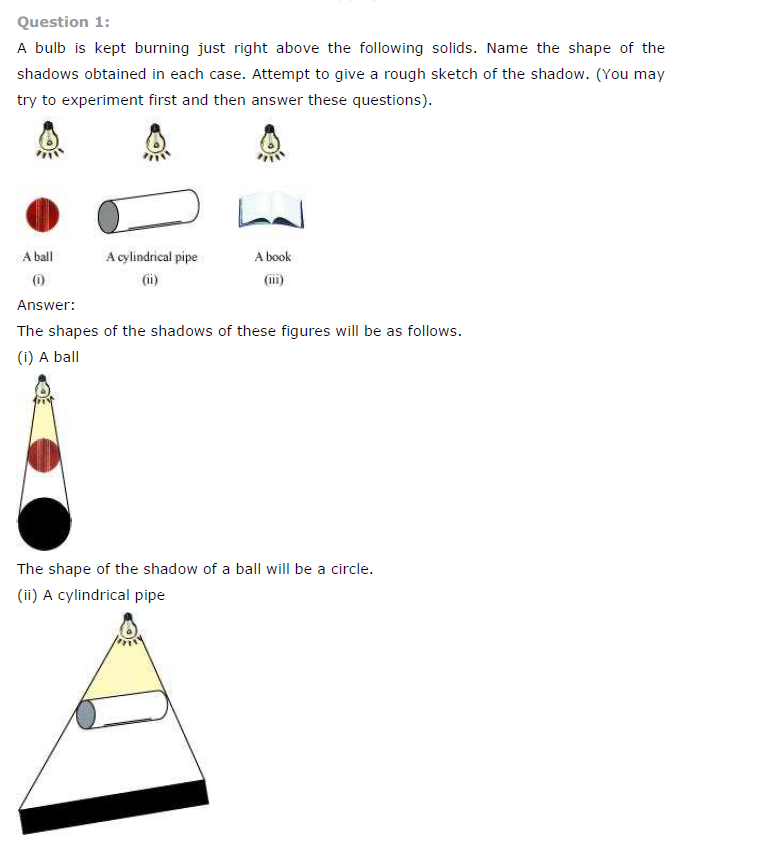
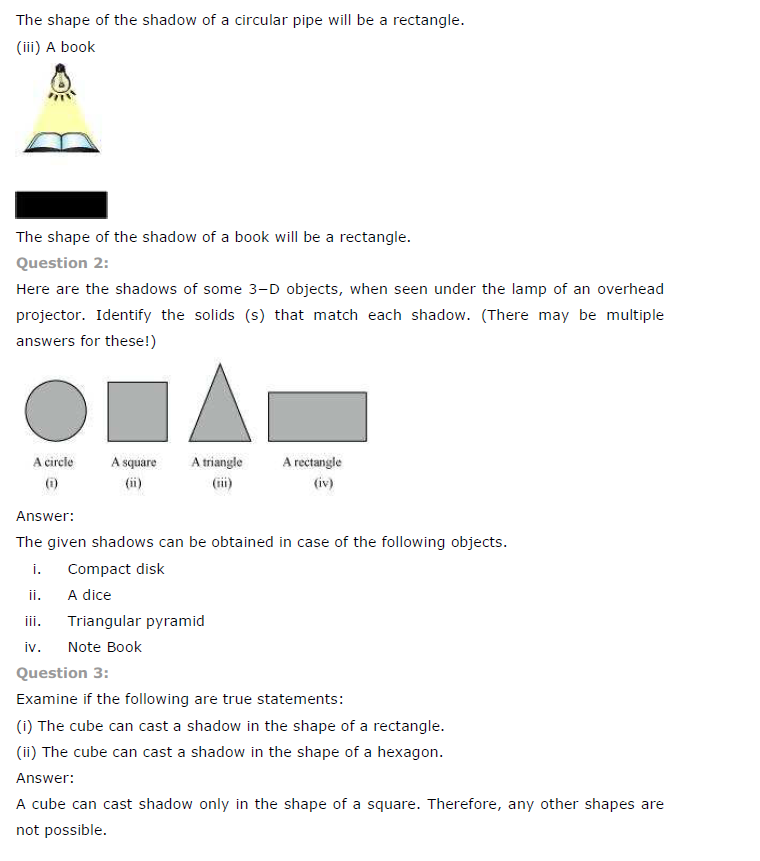
Visualising Solid Shapes Class 7 Extra Questions Maths Chapter 15
Extra Questions for Class 7 Maths Chapter 15 Visualising Solid Shapes
Visualising Solid Shapes Class 7 Extra Questions Very Short Answer Type
Question 1.
If three cubes of dimensions 2 cm × 2 cm × 2 cm are placed end to end, what would be the dimension of the resulting cuboid?
Solution:
Length of the resulting cuboid = 2 cm + 2 cm + 2 cm = 6 cm
Breadth = 2 cm
Height = 2 cm
Hence the required dimensions = 6 cm × 2 cm × 2 cm.
Question 2.
Answer the following:
(i) Why a cone is not a pyramid?
(ii) How many dimension a solid have?
(iii) Name the solid having one curved and two flat faces but no vertex.
Solution:
(i) Cone is not a pyramid because its base is not a polygon.
(ii) Three.
(iii) Cylinder
Question 3.
Write down the number of edges on each of the following solid figures:
(i) Cube
(ii) Tetrahedron
(iii) Sphere
(iv) Triangular prism
Solution:
(i) 12
(ii) 6
(iii) 0
(iv) 9
Question 4.
What cross-section do you get when you give a horizontal cut to an ice cream cone?
Solution:
Circle.
Question 5.
Determine the number of edges, vertices and faces in the given figure.
Solution:
Edges = 8
Vertices = 5
Faces = 5
Question 6.
Draw the sketch of two figure that has no edge.
Solution:
Question 7.
Draw the sketches of two figures that have no vertex.
Solution:
Question 8.
Name any three objects which resemble a sphere and cone.
Solution:
Sphere: Football, Earth, Round table
Cone: Conical funnel, ice cream cone, conical cracker
Question 9.
What shape would we get from the given figure?
Solution:
From the given net, we get a rectangular pyramid.
Visualising Solid Shapes Class 7 Extra Questions Short Answer Type
Question 10.
For the solids given below sketch the front, side and top view
Solution:

Question 11.
Match the following:
Solution:
(i) → (e)
(ii) → (a)
(iii) → (b)
(iv) → (c)
(v) → (d)
Question 12.
Complete the following table:
Solution:
Question 13.
Draw a plan, front and side elevations of the following solids.
Solution:
Question 14.
Name the solid that would be formed by each net:
Solution:
(i) Triangular pyramid
(ii) Square pyramid
(iii) Hexagonal pyramid
Question 15.
Name the solids that have:
(i) 1 curved surface
(ii) 4 faces
(iii) 6 faces
(iv) 5 faces and 5 vertices
(v) 8 triangular faces
(vi) 6 triangular faces and 2 hexagonal faces.
Solution:
(i) Cylinder
(ii) Tetrahedron
(iii) Cube and cuboid
(iv) Square pyramid or rectangular pyramid
(v) Regular octahedron
(vi) Hexagonal prism.
Question 16.
Draw the top, side and front views of the given solids:
Solution:
Question 17.
Draw the net of a cuboid having same breadth and height, but length double the breadth.
Solution:
Question 18.
Draw the nets of the following:
(i) Triangular prisms
(ii) Tetrahedron
(iii) Cuboid.
Solution:
.png)
.png)